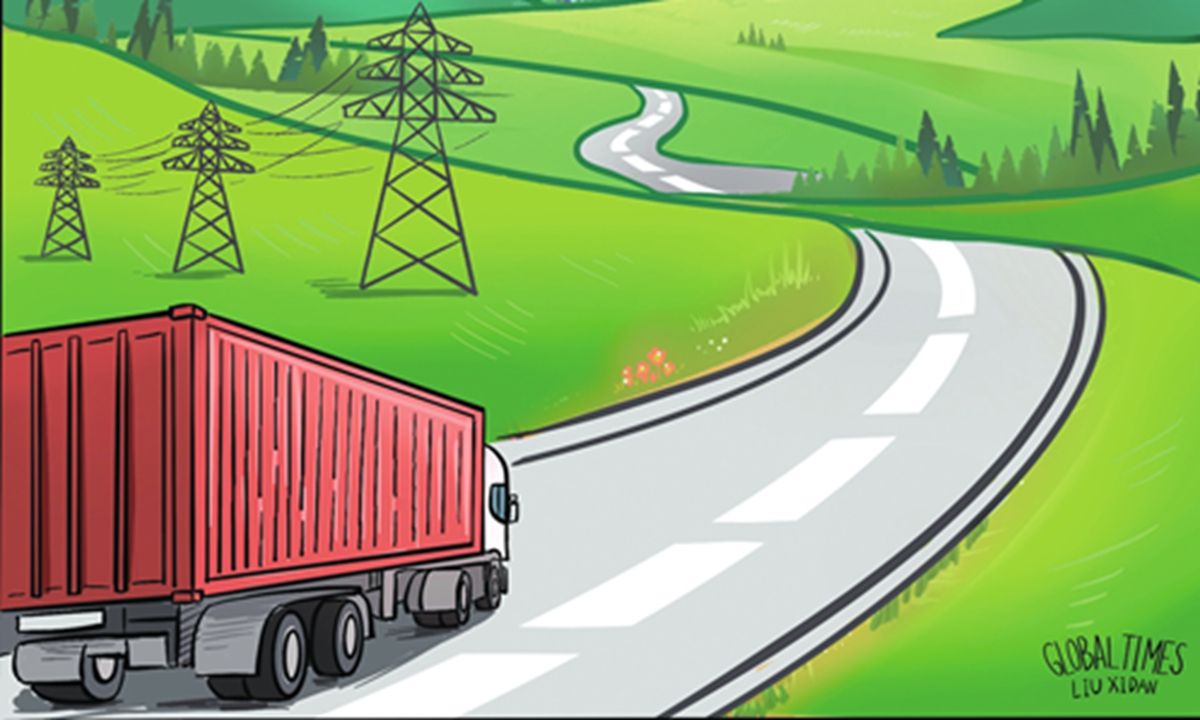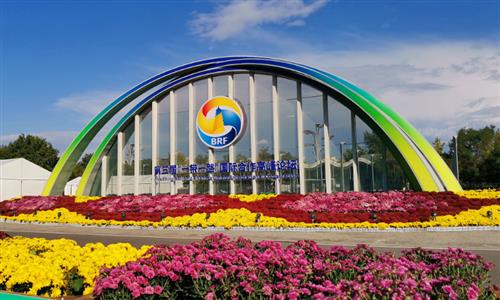
Illustration:Liu Xidan/GT
I was standing at the top of Jiayu Pass in Jiayuguan city, Northwest China's Gansu Province, with a great view of the woods and farmland extending deeper to the west. In the distance, I could see the snow-capped mountains and the high-voltage transmission lines, as well as trucks running on the highway.
At the time, the third Belt and Road Forum for International Cooperation was about to be held in Beijing. Jiayu Pass and the Belt and Road have historical and practical connections. Located five kilometers west of Jiayuguan city, under the jurisdiction of Gansu Province, this ancient pass used to be the most important pass along the Silk Road.
Today, Jiayu Pass has become an important hub in China's vast network of land connections. Located in the Hexi Corridor, Jiayu Pass has been a major transport link between the central plains of China and the frontier regions since ancient times. It is also China's main land transport route to Central Asia, Russia, the Middle East and Europe.
Jiayu Pass was built in 1372 during the Ming Dynasty (1368-1644) and is the most significant existing pass on the Great Wall and one of the most essential passes in Chinese history.
However, in 1494, the Jiayu Pass was closed. The Ming government used the pass as a defense against the encroachment of external forces into the Central Plains. After Zheng He's voyages, the Ming Dynasty adopted a sea ban policy. This was known to later generations as the "closed-door policy."
In 1984, Deng Xiaoping pointed out when talking about this period of history that China remained isolated for more than 300 years from the middle of the Ming Dynasty to the Opium War, or for nearly 200 years counting from the reign of Kangxi Emperor in Qing Dynasty (1644-1911). As a consequence, the country declined into poverty and ignorance. This is why since then it is has been crucial for China to pursue the path of reform and opening-up.
As a result, Jiayu Pass began to undergo a radical and dramatic change. It is no longer a small, desolate town, but a modern city. Today, Jiayuguan city has emerged as a vital hub in China's extensive network. The Hexi Corridor is also the primary corridor to China's west, which has a crucial role in the social stability and economic development of Xinjiang Uygur Autonomous Region.
Infrastructure throughout the whole of China, including highways, railways and high-speed railways, oil pipelines and the West-to-East gas pipeline, is more closely linked, channeling vigorous vitality into the economy.
The Hexi Corridor's all-around facilities have formed a three-dimensional corridor. The number of "air corridors" has increased in recent years, and international freight trains have opened intensively, the highway pass through Xinjiang Uygur Autonomous Region to the Central and South Asia. Agricultural products like onions, apples and potatoes are transported to Central and South Asia.
Recently, my local friends informed me that a special train carrying BYD's new energy vehicles passed through this area on its way to Horgos port in Xinjiang. From there, it eventually reached Tashkent, the capital of Uzbekistan. It was then distributed to other countries and regions in Central Asia. Additionally, more goods from Central and South Asia are exported through the corridor to China's big cities.
In late May of this year, a truck carrying cold chain containers was sent from Pakistan to Beijing and then to Shanghai via a cross-border land route. For the first time, the China-Pakistan Economic Corridor has realized the land transport of seafood containers.
The reform and opening-up has invigorated the Jiayu Pass and the Hexi Corridor. If the Belt and Road Initiative is presenting a solution to the world, what does China, a country committed to reform and opening-up, have to offer?
From Jiayu Pass, we can understand more fully how the Belt and Road can provide a strong impetus for cooperation and development in Central and South Asia, as well as the Middle East and Europe. Traveling further west, we will go to Dunhuang City, Northwest China's Gansu Province, the jewel of cultural exchanges between China and the rest of the world, where the four major world civilizations - Chinese, Indian, Greek, and Islamic - met a thousand years ago…
The author is a senior editor with People's Daily, and currently a senior fellow with the Chongyang Institute for Financial Studies at Renmin University of China. dinggang@globaltimes.com.cn. Follow him on Twitter @dinggangchina



